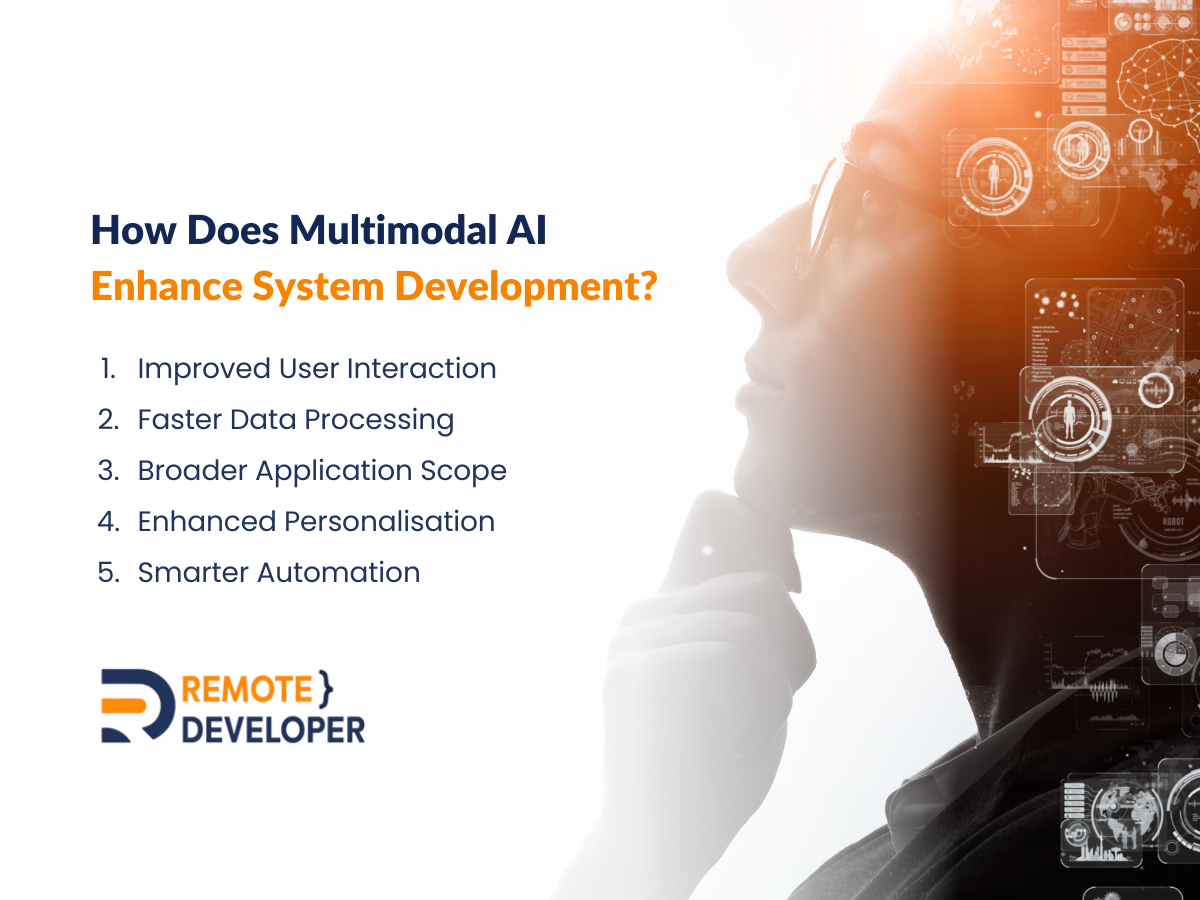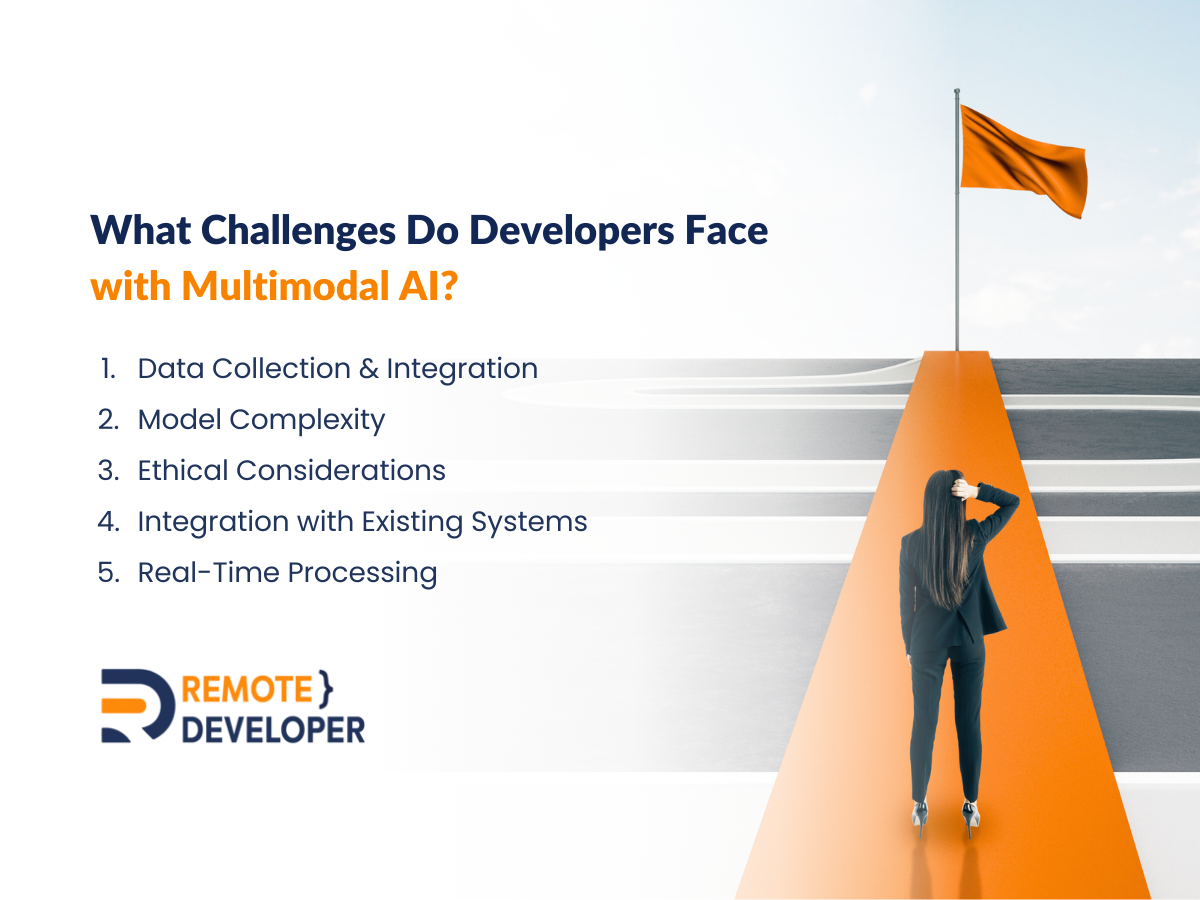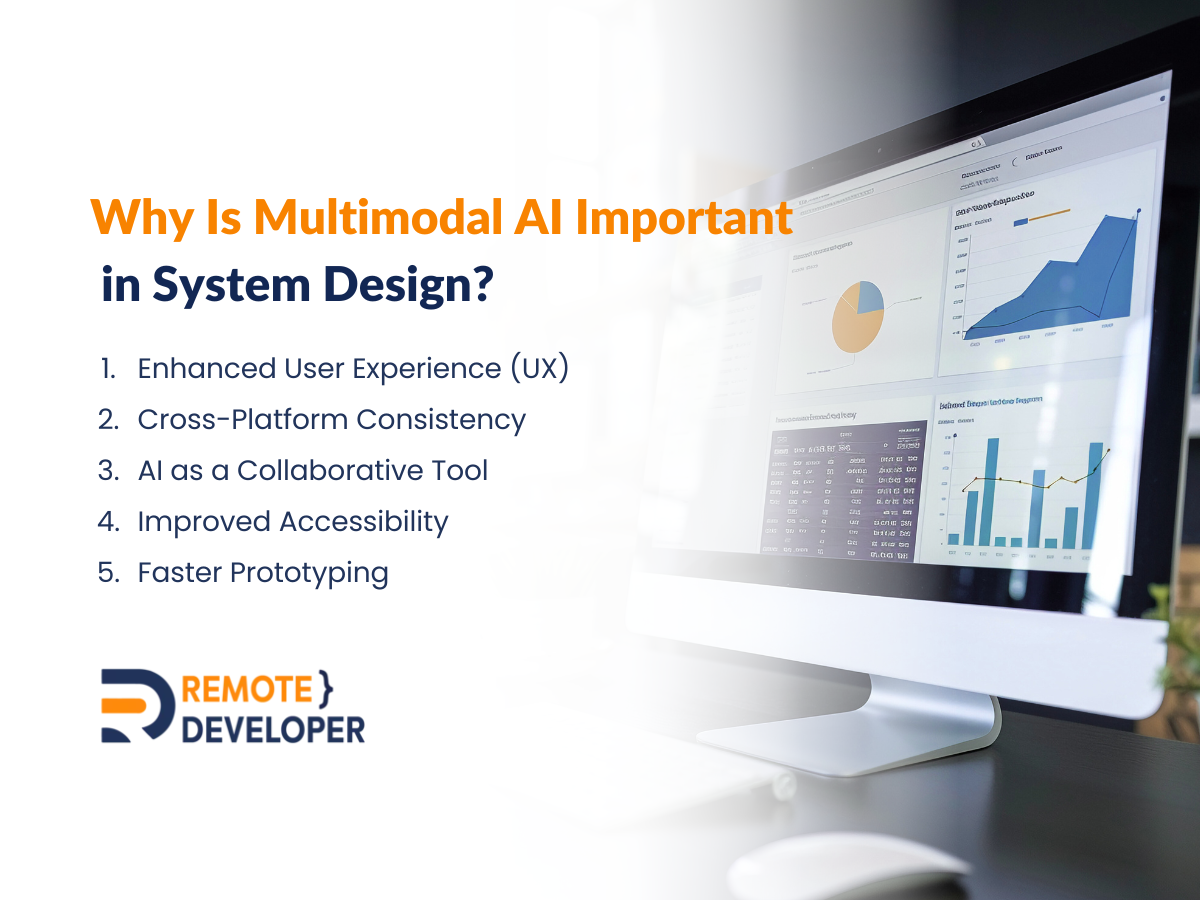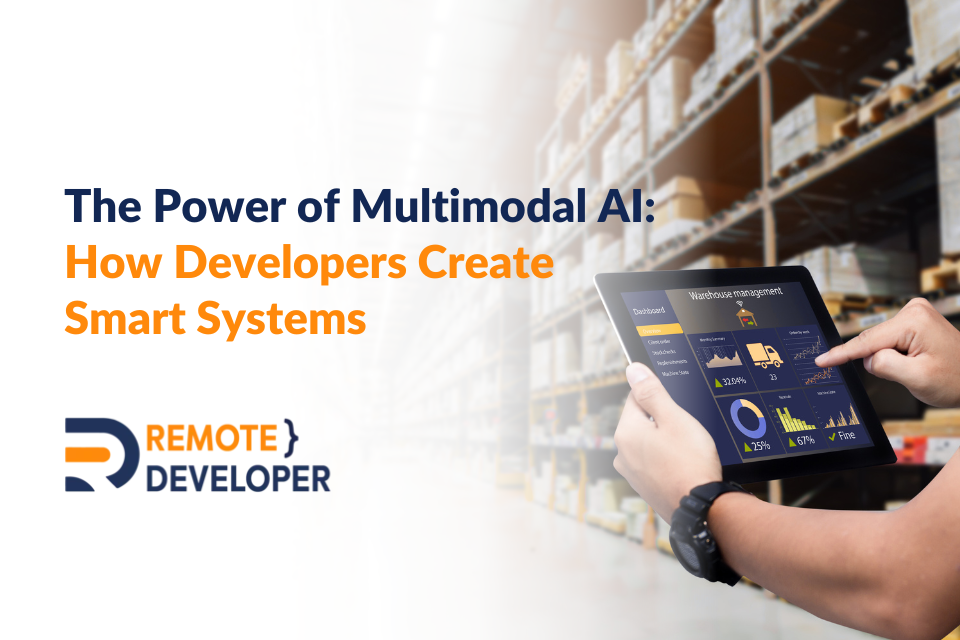Ever wondered how AI can understand more than just text—like images, voice, or even gestures? Multimodal AI makes this possible, combining different types of data to create smarter, more responsive systems. But what does this mean for developers? How can you use this technology to build smarter apps and websites?
With multimodal AI, the potential to create engaging and intuitive user experiences is limitless. Whether it’s virtual assistants that understand both what you say and show, or healthcare systems that use images and voice data to make better decisions, AI-powered apps are changing the way we build systems. This is just the start, and there’s so much more to explore.
What is Multimodal AI?
Multimodal AI refers to AI systems that can understand and process more than one type of data at once. Think of it like a system that can handle text, images, and audio together—just like how humans use a mix of senses to understand the world around us.
For example, when you ask Siri to find a photo for you based on a description, or when you use a visual search tool that combines text and images, that’s multimodal AI in action. It’s also used in AI in automated testing to simulate complex user interactions, improving the testing process.
How Does Multimodal AI Enhance System Development?
Multimodal AI is changing how developers build smarter systems by combining text, images, speech, and more to enhance user experience and system performance. So, how does this benefit developers?

1. Improved User Interaction
Multimodal AI makes it easier to build apps that interact with users in a more natural, intuitive way. Imagine apps that not only understand text but can also process voice commands, recognise images, or even respond to gestures. Smarter chatbots, voice assistants, and image-driven search engines are all powered by multimodal AI.
2. Faster Data Processing
Because multimodal AI can handle different types of data at the same time, it’s way faster at processing information. This means you can build systems that respond quickly, whether they’re pulling insights from a database or analysing customer feedback.
3. Broader Application Scope
Multimodal AI opens up opportunities in areas you might not have thought possible before. From healthcare, where diagnostic tools interpret both images and patient data, to customer service, AI chatbots in customer support understand and respond to both text and speech, and the possibilities are endless.
4. Enhanced Personalisation
With multimodal AI, systems can better adjust to each user’s needs. By understanding different types of input, AI can make better guesses or suggestions, giving a more personalised experience. For example, AI that uses voice and face recognition could give responses based on who’s talking.
5. Smarter Automation
Multimodal AI also helps automation by making it easier to carry out tricky tasks. For example, automating both image recognition and text analysis allows systems to make quick decisions, like a security system that uses video and sound to spot unusual activity.
What Challenges Do Developers Face with Multimodal AI?
It’s not all sunshine and rainbows. There are a few hurdles developers have to deal with when working with multimodal AI.

1. Data Collection & Integration
To train a multimodal AI system, you need a lot of data like words, pictures and sounds. Getting all this stuff, cleaning it up and putting it together can be tricky, but it’s really important to make the system work properly.
2. Model Complexity
Multimodal AI models are generally more complex and require more computational power. Training these models takes time and a solid understanding of machine learning. But don’t worry, there are plenty of tools to help with this.
3. Ethical Considerations
As with any AI, there are ethical challenges, including bias and privacy concerns. When you’re building multimodal AI systems, it’s crucial to make sure your models are trained on diverse, representative data and that you’re transparent about how the data is used.
4. Integration with Existing Systems
Integrating multimodal AI into an existing system can be a headache. You may need to overhaul your infrastructure to support multimodal inputs, and syncing the different data types can take a lot of time and effort.
5. Real-Time Processing
Dealing with different types of data at once, especially in real-time, can be tricky. Multimodal AI needs a lot of computing power, and it’s important to keep things fast for apps that need quick, accurate results, like live translation or self-driving cars.
Why Is Multimodal AI Important in System Design?
When it comes to building systems, multimodal AI has a big impact.

1. Enhanced User Experience (UX)
Multimodal AI improves user experience through the use of text, voice, images, and video, enabling more human-like interactions. Users get smoother, more intuitive, and engaging experiences that go beyond traditional input methods.
2. Cross-Platform Consistency
Because multimodal AI works across different devices, it helps create a consistent user experience. Whether your app is on a smartphone, desktop, or even a smart speaker, the user experience stays the same.
3. AI as a Collaborative Tool
The cool thing about multimodal AI is that it doesn’t replace developers—it enhances your work. AI can help with design, testing, debugging, and even writing code, making your workflow smoother and faster with AI productivity tools.
4. Improved Accessibility
Multimodal AI can make apps more accessible for people with disabilities. For example, voice-activated systems paired with image recognition can help people with visual impairments interact with technology in a more intuitive way.
5. Faster Prototyping
Multimodal AI can speed up the development process, enabling faster prototyping of new features. With powerful models and tools available, you can test out different modalities (text, images, voice) quickly and iteratively to improve user interactions.
Conclusion
Multimodal AI is the next big thing for developers, offering an exciting new way to create smarter, more interactive systems. It’s not just about combining text and images—it’s about building systems that can see, hear, and understand in ways that were once only imagined.
By embracing multimodal AI, you’ll be at the forefront of creating the next generation of apps and systems that can truly engage users across multiple platforms.
So, whether you’re working on a chatbot, an image recognition system, or something completely new, now’s the time to start exploring how multimodal AI can level up your development game.
Ready to transform your business with multimodal AI? Contact us today, we’re ready to help!

